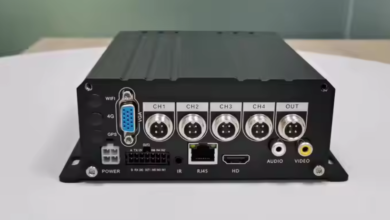
From Monitoring to Mastery: The Evolution of Media Intelligence
When data is created every second and stories are being created in every possible channel, being ahead of the conversation is no longer a choice, but a necessity. The simple media clipping has evolved into real time media monitoring and media intelligence services which enables brands to have actionable intelligence. Media intelligence is no longer about watching; it is about understanding, predicting and acting.
The Origins of Media Monitoring
The origins of Media Monitoring Services can be traced back to the early days of public relations, when the professionals would have to go through the newspapers and broadcast transcripts by hand to locate brand mentions. The aim was straightforward; to monitor what was being said.
This process has been extended to online news and blogs with the introduction of digital media. Nevertheless, it was only with the boom of social media that Media Monitoring Solutions needed to change radically. In an instant, millions of user-generated posts, tweets, videos and forums had to be monitored, not only to be seen, but to be tracked in terms of sentiment, trends and even crisis.
What Is Modern Media Intelligence?
The new media intelligence services are much more than just mention tracking. They integrate technology, data science, and communication strategy into an effective brand awareness, crisis management, competitive benchmarking, and audience insights system.
The following is what a contemporary Media Monitoring Platform usually provides:
- Multichannel Monitoring: News websites, social media channels, podcasts, YouTube, forums and TV/Radio feeds.
- Sentiment Analysis: Understand the word of mouth in addition to the attitude of the people towards your brand.
- Competitive Analysis: Monitor references to competitors, product comparisons and market share of voice.
- Crisis Alerts: Receive immediate alerts when there is an increase in mentions or negative sentiment that could be a sign of an upcoming crisis.
- Custom Dashboards: KPI views, campaign tracking and decision views by executives.
Real-Time Media Monitoring: A Business Necessity
The modern media universe is very dynamic and atomized. The news travels in a blink of an eye and it takes a couple of minutes to cause change to the brand image through viral contents. This is the reason why real-time media monitoring turned out to be a significant aspect.
On breaking news, tracking of a product launch, or crisis in PR, the real time updates will make sure that the brands are not caught off-guard. This is particularly important in those sectors in which reputational loss or lost opportunity can be costly e.g. finance, healthcare, and technologies.
Using APIs, AI and bubble crawlers, real-time companies can provide the information second by second rather than hours later. With such speed, the communications staff will be light-footed-before an article is run away.
Read Also: Tunnel Radio Technology Advancements for Underground Mines
The Shift from Reporting to Strategic Insights
The conventional media monitoring tools gave reports and mentions. The Media Monitoring Solutions of today provide prescriptive answers: Why was the sentiment down this week? What was the influencer that caused that engagement spike? How does the share of voice compare with the previous month?
Such insights make it possible:
- Marketing Optimization: Learn what is working in the campaigns.
- Product Feedback Loops: Monitor user feedback on forums and social media.
- Investor Relations: Check how the media reports your financial performance.
- Brand Health: Understand the changes in perception and awareness over time.
This type of strategic analysis turns surveillance into control.
Media Intelligence as a Competitive Advantage
The best performing companies are using media intelligence as an essential component of their decision making process- alongside CRM and ERP systems. Media data can be used to guide the way, whether it is entering a new market, launching a campaign, or going through a crisis.
The following are some of the benefits:
- Quicker Decision Making: Live dashboards assist C-level executives to make instant decisions.
- Risk Mitigation: Instantaneous identification of misinformation or negative patterns.
- Better ROI: Measure PR activity to actual business performance with attribution modeling.
- Audience Alignment: Message according to what the audience is talking about and what they are worried about.
Looking Ahead: The Future of Media Intelligence
With the development of AI and machine learning, there is a likelihood that media monitoring platforms will get smarter. Trends to be seen in future:
- Predictive Analytics: Know in advance when a media storm is going to take place or when a viral trend will occur.
- Deep Sentiment Layers: Move beyond positive/negative to identify emotion and intent.
- Voice & Video Analysis: Podcasts and YouTube transcription and tagging.
- Customization at Scale: Personalized alerts and dashboards to all the stakeholders.
Final Thoughts
The transition between simple media monitoring tools to media intelligence tools is a paradigm shift in the way brands can interact with the story of the people. When perception is power, businesses that invest in learning how to use media intelligence are not only staying abreast, but they are ahead.
Through a holistic and real-time perspective of media, organizations will be able to safeguard their reputation, create new opportunities, and make wiser decisions that will have a resonance among stakeholders. The question in this new age is not whether you should monitor media- but how smart you do it.




